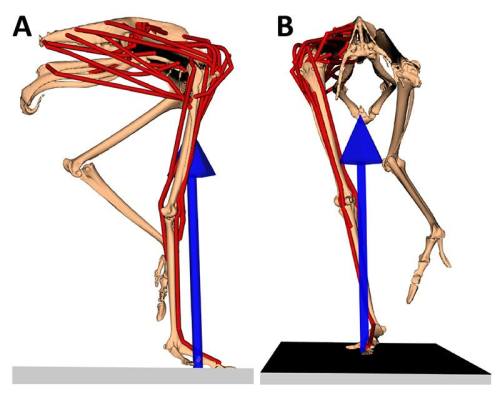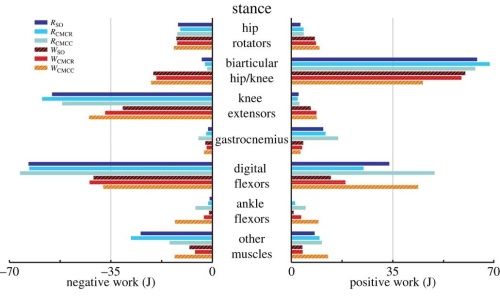I’ve written some soul-searching posts here before, but the topic I’ve long held back from addressing is the one that feels most forbidden as a senior-level academic. Today I’ve relented and written on it. Well, anyway I wrote this about 4 months ago and sat on it, and now’s the time. To hell with the forbidden — it is that nature which has been a torment. In academia we hear many stories, and are encouraged to talk openly about, the trials and tribulations of securing a permanent faculty (or similar; e.g. curator) post. I could write about my experience as an early career scientist, which wasn’t easy, but it wouldn’t be as contemporary or as fraught with emotion as this one is. This post is about the next step, one we hear so little about: attempting a mid-career transition between institutions.
I’ve bottled these thoughts up long enough but realized they are a teachable moment that others may benefit from, as I will loop back to at the end. The point of the post is not to seek pity or sympathy, or convey that doom and gloom about academia that pervades the internet, or even to hope for empathy, but to simply state this how it has been for me so far (SPOILER: it’s a story of failure), if one is headed down this path it might help, or at least the tale might be of interest in some other way, even having parallels with some non-academic careers.
Stomach-Churning Rating: me 1010/10; yours will vary
It is probably a good idea, and I don’t know the statistics but I imagine it is common, to move between institutions at least once in a scientist’s career, and not uncommonly twice; thrice enters a bad dimension and four or more times is either pathological or purposefully peripatetic (which might be fun!). Sooner or later one wants a change of pace: one may seek to move up the ladder to a better institution, more salary or other benefits, more desirable geographic location, escape poor working conditions for anything else, and/or other factors. New adventure, mid-life crisis, whatever. At mid-career, the temporal window is closing to find that place you finish your career at, hoping for ultimate stability and satisfaction. The pressure begins mounting, but while the opportunities to transition at assistant professor level are small (with much competition), the opportunities to do so at associate professor, let alone full professor level, approach the nadir. It varies among fields and geographic regions (and how choosy one is), but there may be only 1-2 jobs in one’s field in a year. Competition may be smaller than at junior level, or just hard to even compare, but a qualitatively different factor emerges.
Early career scientists (ECSs) are evaluated in job interviews for faculty-level posts in terms of their potential to grow to become what the institution needs; with evidence of already being on that trajectory important. But it’s less about who you are as how you convince the institution that you can become that dream academic they need most. At a mid-career level, everything is in plain sight. You have a track record. You probably know 1+ people in the institution or they might never give your application a second look. So as a known quantity, the question switches to how the person fits what is needed now and in the immediate future. They are less malleable. They probably won’t do a major pivot to change their research or other direction; that’s hard at a senior level (and an uphill battle to convince committees of). Once the few candidates have been interviewed, it’s probably clear to the search committee who fits their needs. There is less likely to be the “what if?” mystery with the ambiguous future of ECSs that may leave the committee more uncertain. It’s like being handed a puzzle to put together, vs. handed a batch of ingredients to cook freestyle.
Now begins my personal story. It’s maybe the worst-kept secret I have, I realize. And now I’m OK with that. When I came to the RVC, I was told that I’d probably remain for 5-7 years and then move back to the USA, and that was fine — even expected. I thought as much, too, and by the end of that time period I’d been applying for jobs to make that return voyage as prophesized. 10 years later, after almost 16 years, I’m still here. I’ve hit the wall of the mid-career transition and had to come to grips with its harsh reality. With few jobs and slim odds, I worry that I’m near an event horizon. I’m an academic straddling some fields that makes me somewhat of a square peg for many jobs. What am I? Do I fit into conventional labels and needs? This has been my career-long identity struggle — an evolutionary biomechanist is a weird mix. Having a large grant, too (the DAWNDINOS one), could be seen as an impediment as I’m still set on a major research project for 2 more years. Yet who knows… the rest is personal and remains uncertain.
Before I finish I must address the forbidden nature of such concerns. As mid-career academics, we’re enormously privileged. We have a job, perhaps a family, a home, relative stability and security, and so forth. ECSs might give anything for that! But we have our own lives to live, and the existential crisis of time-is-running-out only gets more intense. The prizes of tenure and other success may not come with happiness. We may feel “forbidden” to speak of our experiences not only because of such privilege, but also because of massively complex socio-political interactions that face us when trying to move institutions. I am fortunate that my institution has had my back throughout my process — others would not be so kind. I’ve heard of some universities that will sack their academics if they mention to senior administrators that they are contemplating a move! That’s just evil.
It can cause deep anxiety, uncertainty, political chicanery and other trouble for the news of seeking a mid-career transition to reach the wrong ears at the wrong time — particularly as it tends to be a prolonged, uncertain process. Seeking a job vs. moving with a signed contract are different things! Far, far, far apart on the spectrum of certainty are they. Moreover, the choice to seek to move jobs is a personal and private one. We may not want to become the topics of idle gossip, or even misinformation and undermining. These factors make the journey a lonely and unique one, and it would be a grotesque understatement to say that the personal (e.g. family, health) dynamics involved will compound the stresses. Together these can impact not just life outside of work but performance at and enjoyment of work itself.
The learning opportunity that I most want to share is this: if you’re on this kind of career track, plan to move early and get started early. Apply to jobs sooner (i.e. as an assistant professor) than later (i.e. tenure onwards) even if you’re not sure about wanting to move. Talk to your partner, peers or those that matter most about this; have a trusted, private support network and advice. Get some irons in the fire and see what opportunities arise. Expect that it may take much longer than you thought, so be strategic. Have a plan B, C and D; think about how flexible you can be. And, while you might do well getting interviews and hear nice things about how amazing you are (cold comfort at times), get used to the answer that you just don’t fit what a search committee was looking for. “Fit” is that Swiss army knife of words we use in such situations in academia, to embrace a wide range of reasons we don’t want to (or can’t, for HR/legal concerns) get into at the time for why a job decision is made. A lack of “fit” is a hard word to hear and accept, as we might see it otherwise, but it is the reality and we must accept it. By accepting such realities, perhaps the forbidden will become bearable.










































